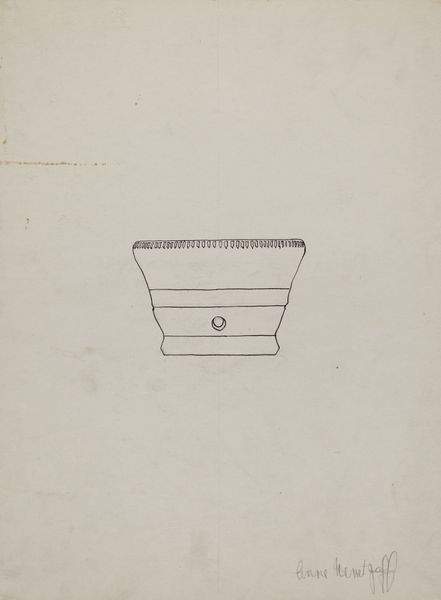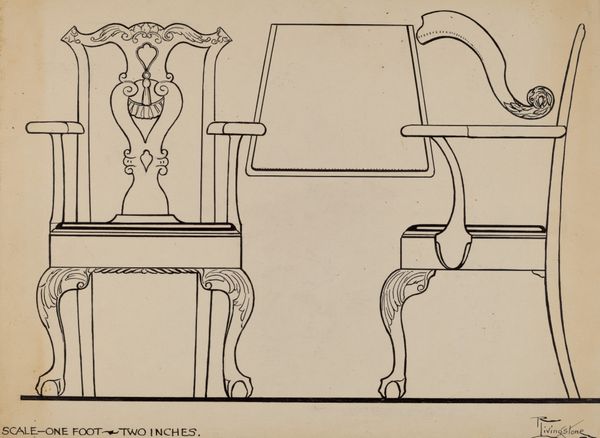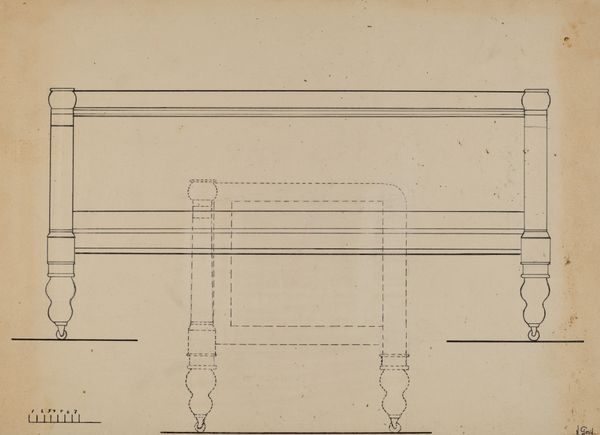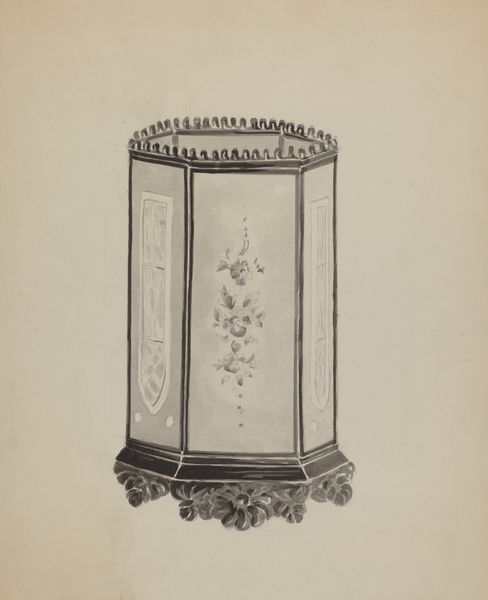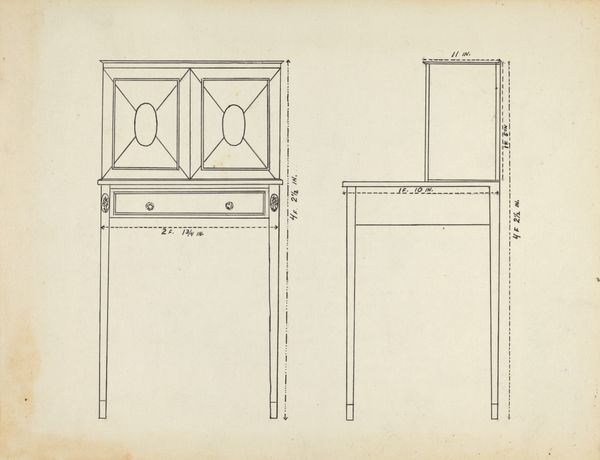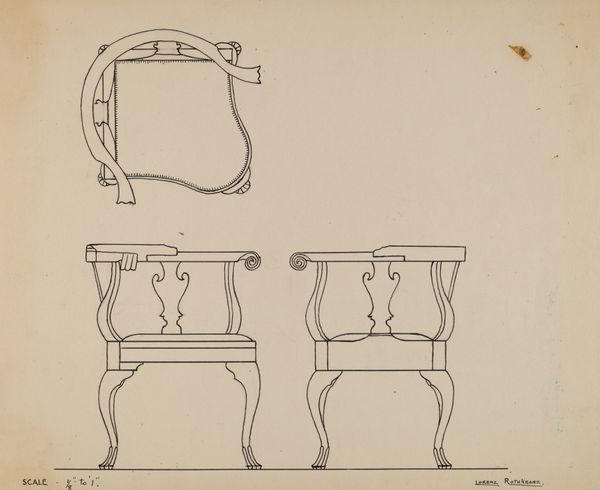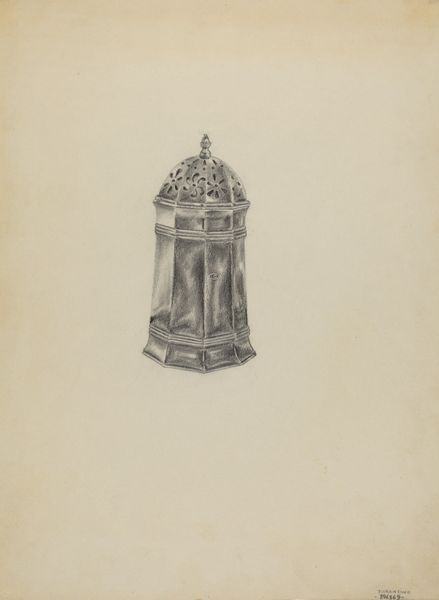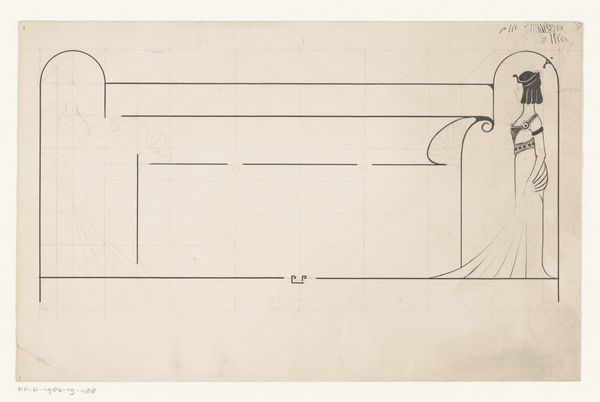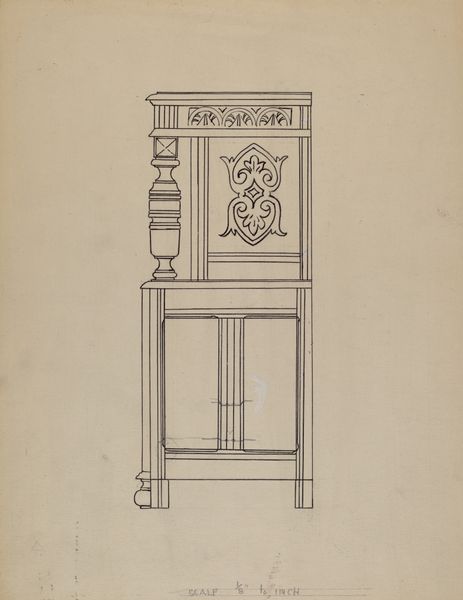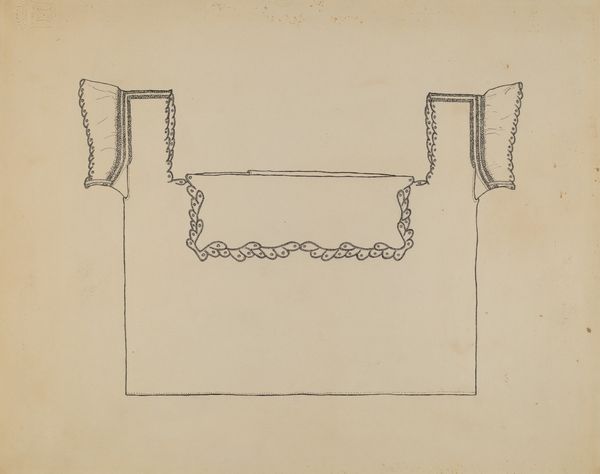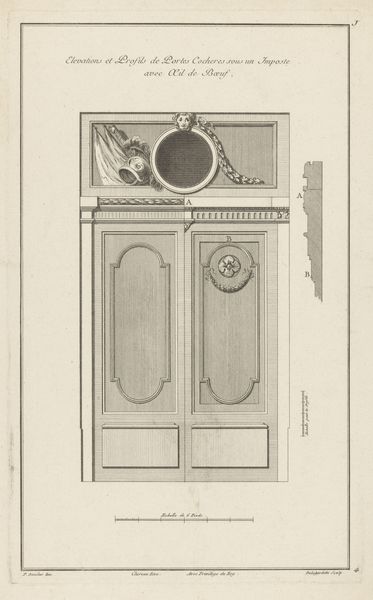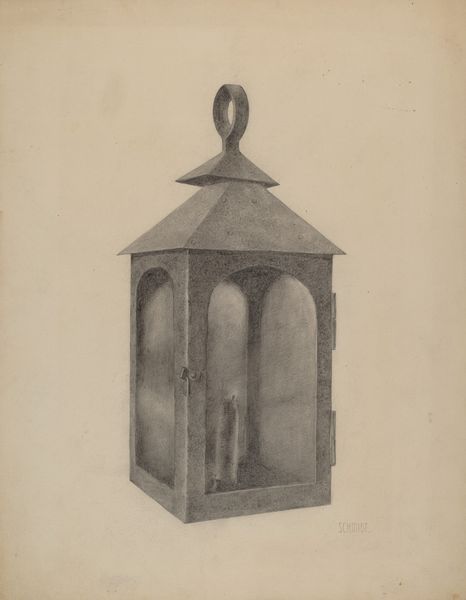
drawing
#
drawing
#
geometric
#
modernism
Dimensions: overall: 18.4 x 24.1 cm (7 1/4 x 9 1/2 in.) Original IAD Object: 22 3/4"high; 13"wide
Copyright: National Gallery of Art: CC0 1.0
Curator: Here we have Francis Borelli’s “Mirror,” a drawing made circa 1936. It presents us with both a frontal and a side view of the piece. What's your initial reaction? Editor: My first impression is a sense of restrained elegance, despite the geometric shapes that seem so prevalent. The lines are crisp and precise, hinting at a clean and very modern aesthetic. It’s stark and bold in its simplicity. Curator: I see it too. And in the context of the 1930s, with rising fascism and social unrest, an object of vanity depicted with such a clear, unadorned style could be interpreted as either a rejection of decadent values or perhaps a longing for order and self-control. Editor: Interesting point. The frame is utterly rigid—like a container. The heart-like void that interrupts the top seems almost rebellious when placed into a design such as this. But could the “vanity” stem also from its creator—their ability to craft art so precisely and accurately with something like line drawing? Curator: I wonder how it's positioned in relation to modernism itself. Modernism often aimed to strip away ornamentation to reveal underlying structures. Mirrors, symbolically, reflect the self, and here Borelli seems to be offering both a physical and perhaps a psychological reflection of that era's desire for clarity and truth. The lack of flourish amplifies that pursuit. It feels devoid of personality, perhaps… suggesting a standardized experience, especially relevant considering what standardization has done to global politics, economies, and other cultural practices. Editor: I follow you—the simplicity echoes that movement's emphasis on function over decoration. The choice of rendering the piece with line drawings brings its bare-bone geometric presence even further. There’s no tone or texture here, which directs my eyes solely toward how each section relates to the other in measured visual harmony. It seems entirely conscious of how the artistic elements interact with the viewing participant. Curator: And those artistic choices resonate even now, making the "Mirror" a thought-provoking artifact, far beyond mere functional design. Editor: Absolutely, after analyzing the stark structural relationships, it highlights just how the very shape, materials and, particularly, negative spaces communicate on a multitude of levels.
Comments
No comments
Be the first to comment and join the conversation on the ultimate creative platform.
